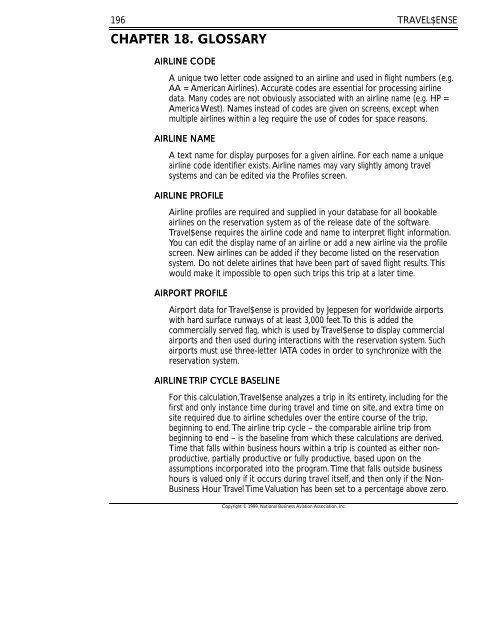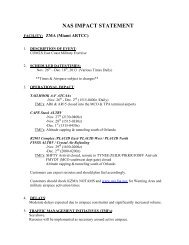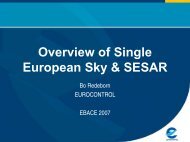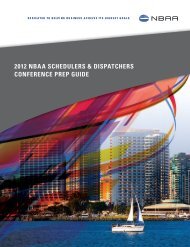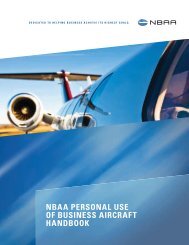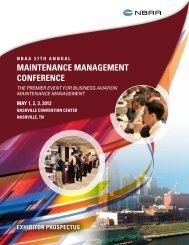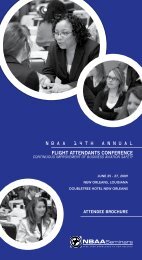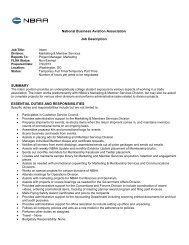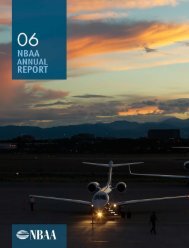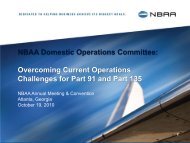Travel$ense User's Guide (PDF, 139 MB) - NBAA
Travel$ense User's Guide (PDF, 139 MB) - NBAA
Travel$ense User's Guide (PDF, 139 MB) - NBAA
- No tags were found...
Create successful ePaper yourself
Turn your PDF publications into a flip-book with our unique Google optimized e-Paper software.
196CHAPTER 18. GLOSSARYTRAVEL$ENSEAIRLINE CODEA unique two letter code assigned to an airline and used in flight numbers (e.g.AA = American Airlines). Accurate codes are essential for processing airlinedata. Many codes are not obviously associated with an airline name (e.g. HP =America West). Names instead of codes are given on screens, except whenmultiple airlines within a leg require the use of codes for space reasons.AIRLINE NAMEA text name for display purposes for a given airline. For each name a uniqueairline code identifier exists. Airline names may vary slightly among travelsystems and can be edited via the Profiles screen.AIRLINE PROFILEAirline profiles are required and supplied in your database for all bookableairlines on the reservation system as of the release date of the software.<strong>Travel$ense</strong> requires the airline code and name to interpret flight information.You can edit the display name of an airline or add a new airline via the profilescreen. New airlines can be added if they become listed on the reservationsystem. Do not delete airlines that have been part of saved flight results. Thiswould make it impossible to open such trips this trip at a later time.AIRPORT PROFILEAirport data for <strong>Travel$ense</strong> is provided by Jeppesen for worldwide airportswith hard surface runways of at least 3,000 feet. To this is added thecommercially served flag, which is used by <strong>Travel$ense</strong> to display commercialairports and then used during interactions with the reservation system. Suchairports must use three-letter IATA codes in order to synchronize with thereservation system.AIRLINE TRIP CYCLE BASELINEFor this calculation, <strong>Travel$ense</strong> analyzes a trip in its entirety, including for thefirst and only instance time during travel and time on site, and extra time onsite required due to airline schedules over the entire course of the trip,beginning to end. The airline trip cycle – the comparable airline trip frombeginning to end – is the baseline from which these calculations are derived.Time that falls within business hours within a trip is counted as either nonproductive,partially productive or fully productive, based upon on theassumptions incorporated into the program. Time that falls outside businesshours is valued only if it occurs during travel itself, and then only if the Non-Business Hour Travel Time Valuation has been set to a percentage above zero.Copyright © 1999, National Business Aviation Association, Inc.


